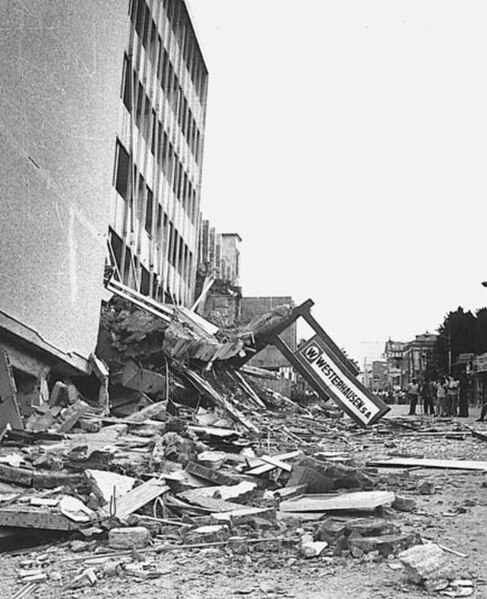Tectonics are the processes that result in the structure and properties of the Earth's crust and its evolution through time.
San Andreas transform fault on the Carrizo Plain
The Tectonic Network of the Earth. Legend: Brown: Terrane (microplate) boundaries in the continents and Mobile Belts, Cyan: Terranes of the Oceanic Plates, Blue: Oceanic transform faults; Red and orange: Fault zones in the Continental and Mountain belt domain; Purple: Main subduction zones and suture zones; Green: Continental margins
An earthquake – also called a quake, tremor, or temblor – is the shaking of the Earth's surface resulting from a sudden release of energy in the lithosphere that creates seismic waves. Earthquakes can range in intensity, from those so weak they cannot be felt, to those violent enough to propel objects and people into the air, damage critical infrastructure, and wreak destruction across entire cities. The seismic activity of an area is the frequency, type, and size of earthquakes experienced over a particular time. The seismicity at a particular location in the Earth is the average rate of seismic energy release per unit volume.
Global plate tectonic movement
Aerial photo of the San Andreas Fault in the Carrizo Plain, northwest of Los Angeles
Collapsed Gran Hotel building in the San Salvador metropolis, after the shallow 1986 San Salvador earthquake
The 2023 Turkey–Syria earthquakes ruptured along segments of the East Anatolian Fault at supershear speeds; more than 50,000 people died in both countries.






